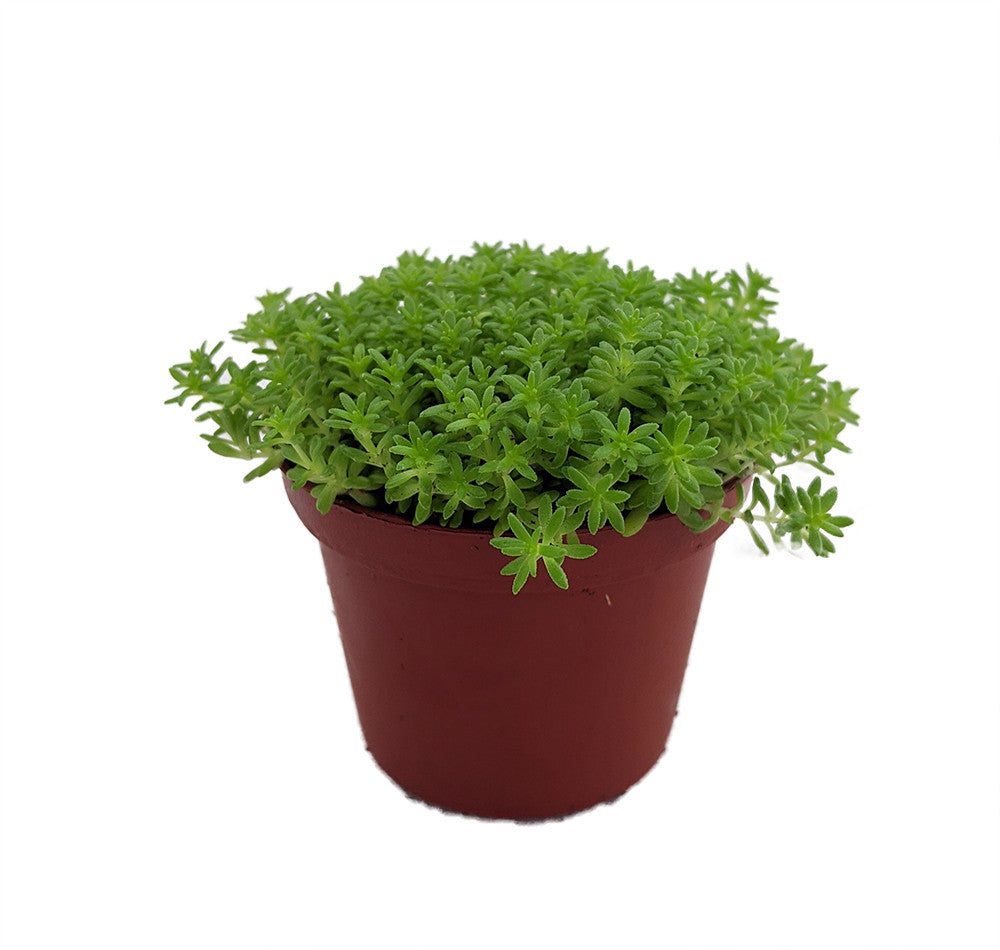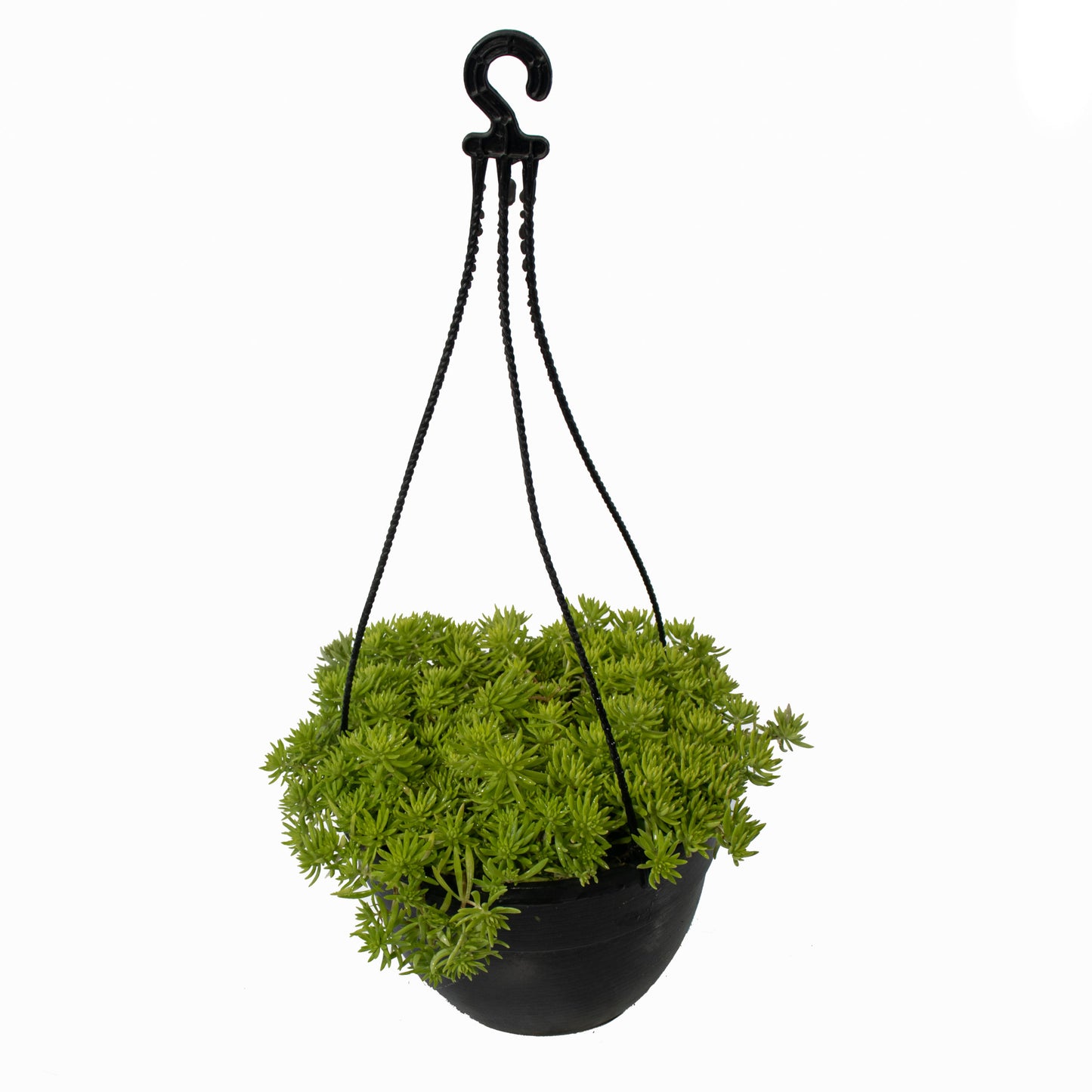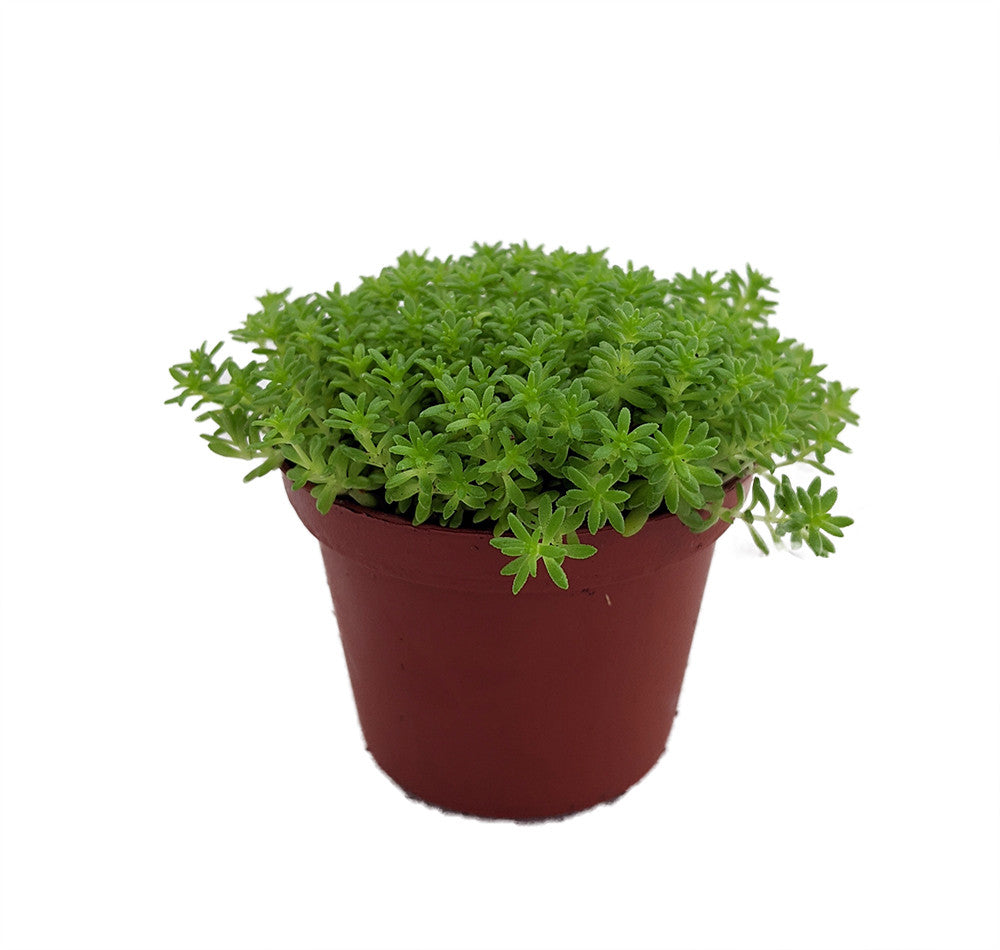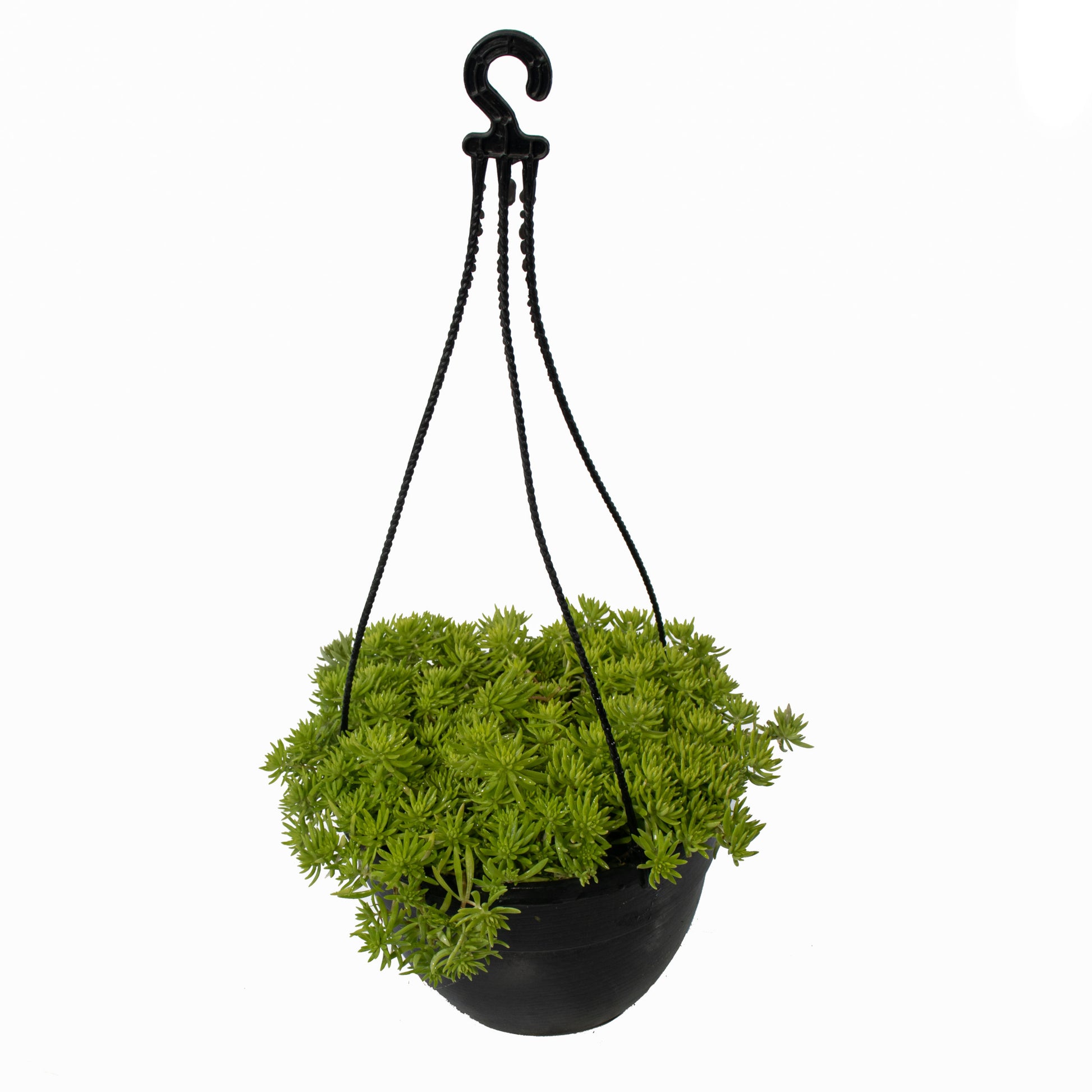Plantsden
Sedum in 4 inch pot
Sedum in 4 inch pot
Couldn't load pickup availability
🌿 Plant Care Guide
- 💡 Light: Bright, indirect sunlight
- 💧 Water: Moderate; water when topsoil feels dry
- 🌱 Soil: Well-draining organic potting mix
- 🌡️ Temperature: 18°C – 30°C
- 💨 Humidity: Moderate
- 🪴 Care Level: Easy and safe for homes with pets


Care Instructions
Care Instructions
Indirect sunlight, water twice a week
Product Description
Product Description
Appearance: Sedum plants come in various shapes, sizes, and colors, but they typically share some common characteristics. They have succulent leaves, often fleshy and cylindrical or rounded, which store water. The leaves can range from various shades of green to blue-green, with some varieties exhibiting red or purple hues, particularly when exposed to sunlight. Sedums may produce small, star-shaped flowers in various colors, such as pink, white, or yellow, depending on the species or variety.
Size: The size of Sedum plants can vary widely depending on the specific species or cultivar. Some Sedums are quite small and compact, while others can grow taller and more sprawling. When used in hanging containers, Sedums are often chosen for their trailing or cascading growth habits, allowing them to spill over the sides of the container and create a visually appealing display.
Light Requirements: Most Sedum varieties prefer bright, indirect light to full sunlight. They are well-suited for hanging baskets placed in locations with ample natural light. However, they can also tolerate some shade, although they may become leggy and display less vibrant colors in lower light conditions.
Watering: Sedum plants are drought-tolerant and prefer to dry out between waterings. Water thoroughly when the top inch (2.5 centimeters) of the soil feels dry. Overwatering can lead to root rot, so it's essential to avoid keeping the soil consistently moist.
Temperature: Sedums generally thrive in temperatures between 60°F to 75°F (15°C to 24°C). They are often grown as outdoor plants in temperate climates but can also be kept indoors as houseplants in cooler regions.
Maintenance: Sedums are known for their low maintenance requirements. Pruning is limited to removing any dead or withered growth or spent flower stalks to encourage new growth and maintain their appearance. Fertilization is typically not necessary for sedum plants, as they are not heavy feeders.
Propagation: Sedum plants can be easily propagated through stem or leaf cuttings. Allow the cuttings to callus for a day or two before planting them in well-draining soil. They will develop roots and grow into new plants.
In summary, Sedum hanging containers typically feature various Sedum species or cultivars with trailing or cascading growth habits. These versatile succulents are known for their striking appearance, low maintenance requirements, and suitability for hanging baskets, making them a popular choice for succulent enthusiasts and gardeners looking to create eye-catching displays.


Why Choose PlantsDen?

Healthy & Fresh Plants
We provide well-nurtured plants ready to brighten your space.

Eco-Friendly Packaging
All plants are packed using recyclable, eco-safe materials.

Carefully Selected Varieties
We handpick unique and vibrant plants to enhance your home or garden.
What Our Plant Lovers Say 🌿
"My Fern arrived healthy and beautiful! Loved the packaging!"
- Aisha K.
"Excellent quality plants and super helpful care tips."
- Rohan M.
"Beautifully packed and delivered fresh — highly recommend!"
- Neha S.
"This is my third order — and they never disappoint!"
- Arjun P.
"The plants bring such a fresh vibe to my balcony!"
- Simran L.
"great product a must buy"


